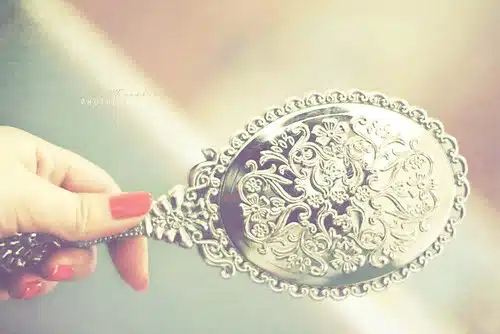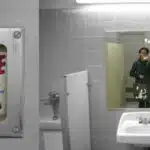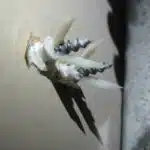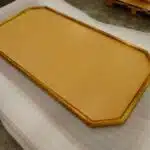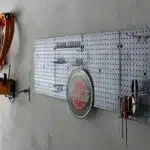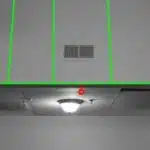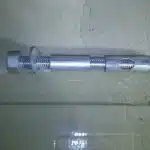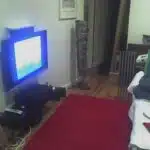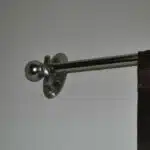Hanging a frameless mirror can be a challenging task, especially for those who lack experience in home improvement. While it may seem like a simple job, there are certain steps that need to be followed to ensure the mirror is safely hung on the wall. In this article, we will provide you with a step-by-step guide on how to hang a frameless mirror, along with some tips and tricks that can make the process easier.
Before starting the installation process, it is important to gather all the necessary tools and materials. These include a stud finder, level, measuring tape, pencil, drill with appropriate bits, screws and anchors. It is also recommended to have another person help you hold the mirror in place while you mark and install it on the wall. By following these instructions and using the right tools and materials, you can successfully hang your own frameless mirror without any hassle.
Preparing For The Installation
Before installing a frameless mirror, it is important to take the necessary precautions to ensure your safety and the safety of those around you. For this project, you will need a few tools including a measuring tape, level, drill with masonry bit, screws and anchors.
To begin, make sure that the area where you will be working is clear of any obstacles. If possible, use a drop cloth or old sheet to protect your floors from debris. It is also recommended that you wear protective eyewear and gloves while handling the mirror and tools.
Before drilling into any surface, always check for electrical wires or plumbing behind the wall. Use a stud finder to locate studs in the wall where you plan on hanging the mirror. This will provide additional support for the weight of the mirror. Once you have located studs or determined an appropriate location for hanging your mirror, mark where each screw will go using a pencil or marker.
Choosing an appropriate wall location is crucial when installing a frameless mirror. In order to achieve optimal results, take time to consider factors such as lighting and room layout. The next section will delve deeper into how to choose the right wall location for your frameless mirror installation project.
Choosing The Right Wall Location
When considering where to hang your frameless mirror, it is important to first take into account the size of the mirror itself. A larger mirror may require a more spacious wall, while a smaller one may be better suited for a narrow wall or even as part of a gallery display. It is also important to consider the room’s lighting, as certain spots in the room may reflect light in a more favorable way. For example, placing your mirror opposite a window can help increase natural light in the room.
In addition to these basic considerations, there are several other factors to keep in mind when choosing the right location for your frameless mirror. Consider any existing decor or furniture pieces in the room and choose a spot that complements these elements rather than detracting from them. Additionally, think about how you will use the mirror and what angles will be most useful for your daily routine.
Ultimately, finding the perfect spot for your frameless mirror requires careful consideration and attention to detail. Take some time to survey different areas of your room and experiment with different locations before making a final decision on where to hang your mirror.
With these factors in mind, it’s time to move on to measuring the space where you plan on hanging your frameless mirror.
Measuring The Space
Measuring accuracy is crucial in hanging a frameless mirror. Having an accurate measurement ensures that the mirror will fit perfectly in the designated space. Start by checking the room layout and identifying where you want to hang the mirror. Take note of any obstacles that may affect the placement of the mirror, such as light switches or electrical outlets.
Next, measure the height and width of the space where you plan to hang the mirror. Use a measuring tape to get precise measurements, and double-check your work to ensure accuracy. If you are unsure about anything, it’s always best to remeasure before proceeding with installation.
Remember that precision is key when measuring for a frameless mirror. Even a slight miscalculation can cause problems when hanging the mirror later on. Taking your time and being meticulous in your measurements will save you from future headaches and ensure that your frameless mirror looks beautiful once installed.
Moving on from measuring accuracy, our next step is finding the studs behind your wall. This step is important since studs provide adequate support for hanging heavy items like mirrors or artwork securely. Keep reading for tips on how to locate studs and prepare for installation.
Finding The Studs
Locating studs is essential in hanging a frameless mirror to ensure it is secure and won’t fall off the wall. A stud is a vertical framing member in a wall, typically made of wood or metal, that supports the weight of the structure above it. Hanging your mirror on drywall alone can lead to disastrous results, as it’s simply not strong enough to hold up a heavy object over time.
One hyperbole that emphasizes the importance of finding a stud is this: “Hanging a frameless mirror without locating studs is like building a house on sand.” This analogy highlights how crucial it is to find a solid foundation for your mirror before you hang it up.
Here are some options for locating studs:
- Use an electronic stud finder
- Look for clues such as electrical outlets or light switches (studs are usually located beside them)
- Tap the wall lightly with your knuckles and listen for changes in sound (studs will produce a dull thud)
- Use a magnet to locate screws or nails in the drywall which will likely be attached to studs
With these options, finding studs should be easy and straightforward. Once you’ve located your studs, you’re ready to move onto marking the wall where you’ll hang your frameless mirror.
Marking The Wall
Accurately measuring the wall before hanging a frameless mirror is essential to ensure the mirror is placed in the desired location. Marking the spot on the wall is the next step, using a pencil or pen, as these are easily erasable. When measuring it is important to consider the height of the mirror, including the frame if applicable, and the amount of space desired between the mirror and the floor. A level should be used to ensure the mirror is hung straight and the measurements remain accurate.
Measuring The Wall
When hanging a frameless mirror, measuring the wall is a crucial step that must not be overlooked. To ensure the mirror is level and properly positioned on the wall, it is recommended to use precise measuring techniques. Start by using a tape measure to determine the height and width of the area where you intend to hang the mirror. Once you have these measurements, mark the center point of where you want the mirror to be placed.
Next, take into consideration any obstacles that may affect the placement of your frameless mirror. For instance, if there are light switches or electrical outlets in close proximity to where you plan to hang your mirror, adjust accordingly. You can also use a stud finder to locate any studs behind the wall as this will provide extra support for heavier mirrors. In addition, make sure to prepare the wall by cleaning it thoroughly and filling any holes or cracks before attempting to hang the mirror.
By following these measuring techniques and wall preparation tips when hanging a frameless mirror, you can increase your chances of success while avoiding costly mistakes or damage to your walls. Take your time and double-check all measurements before making any marks on your walls. With patience and attention to detail, you can create an aesthetically pleasing display that will enhance any room in your home.
Marking The Wall Spot
When hanging a frameless mirror, determining placement is crucial for achieving a balanced and visually appealing display. One way to do this is by using a level to ensure that the mirror is straight. Start by holding the level against the wall where you plan to hang the mirror, making sure it’s flush against the surface. Adjust accordingly until the bubble in the level is centered, indicating that it is level.
Once you have determined that your level is straight, it’s time to mark the spot on the wall where you want your frameless mirror to be hung. Use a pencil or marker to make small marks on the wall at each end of the mirror’s width and height. Then, use a measuring tape or ruler to measure from these marks down to where your hanging hardware will be installed. This will ensure that your mirror hangs at an even height and won’t appear lopsided.
After marking the spots on your wall, double-check your measurements before drilling any holes into the wall for hanging hardware. Remember to take into account any obstacles such as light switches or outlets when determining placement for your frameless mirror. With careful attention paid to marking and measuring techniques, you can create a polished and professional look in any room of your home with a well-positioned frameless mirror.
Drilling Holes
Now that you have marked the wall, it’s time to move on to the next step of hanging a frameless mirror: drilling holes. Drilling techniques are crucial for this task because you want to ensure that the holes are precise and neat. There are different types of drills available in the market, but for this project, an electric drill is recommended as it provides more accuracy and speed.
Before drilling, safety precautions must be taken. Always wear protective gear such as goggles and gloves to prevent any injuries. Make sure that your work area is clutter-free, and there are no obstacles around. Also, keep in mind that drilling through certain materials like tiles or glass require specific drill bits. It’s important to have the right equipment to avoid any damages or breakages.
Now that you know how to use your drill safely, it’s time to start drilling holes on your marked spots. Align your drill bit perpendicular to the wall and start drilling slowly at first so that you can control the depth of each hole. Gradually increase pressure until you reach the desired depth and then gently withdraw the bit from the wall. Repeat this process for all marked spots where you plan to hang your mirror.
With all your holes drilled, it’s now time for inserting anchors into them before finally mounting your frameless mirror onto the wall. But before we proceed with that step, we’ll discuss what kind of anchors will work best for this project in our subsequent section.
Inserting Anchors
When hanging a frameless mirror, the appropriate choice of anchors is essential to ensure the mirror is securely attached to the wall. Metal anchors should be used in plasterboard or drywall, while masonry anchors should be used in brick or concrete walls. Once the appropriate anchors have been chosen, they must be inserted into the wall at the correct height and at the correct distance apart from each other. Care must be taken to ensure that the anchors are inserted correctly to ensure the mirror is securely attached.
Choosing Anchors
As a home improvement expert, it is important to choose the right anchors when hanging a frameless mirror. Choosing the correct anchors will ensure that the mirror is securely fastened to the wall and prevent any potential accidents. One of the most important factors to consider when selecting anchors for your mirror is their weight capacity. It is crucial to choose an anchor that can support the weight of your mirror.
In addition to weight capacity, anchor size should also be considered when inserting anchors for your frameless mirror. The size of your anchor should match the size of the hole you drill into your wall. If your anchor is too small, it may not hold up against the weight of your mirror, and if it is too large, it may cause damage to your wall. Therefore, it is recommended to measure both your anchor and drill bit sizes before drilling into your wall.
Overall, choosing the right anchors for a frameless mirror requires careful consideration of both weight capacity and size. By selecting appropriate anchors, you can ensure that your mirror stays securely in place on your wall for years to come. Always remember to read manufacturer instructions carefully and consult with professionals if necessary in order to prevent any unnecessary accidents or damage during installation.
Inserting Anchors
When it comes to hanging a frameless mirror, one of the most important aspects to consider is the type of anchor you will use to secure it onto your wall. There are various anchor types available in the market, each with their own unique features that can make them suitable for different kinds of walls and mirror weights. It is crucial to choose an appropriate anchor that can support the weight of your mirror and avoid any potential damage or accidents.
In addition to selecting the right anchor type, inserting anchors into your wall requires careful attention to detail. Before drilling holes into your wall, it is recommended to determine the size of the hole needed for your chosen anchor and drill bit size. While it may be tempting to choose a larger anchor than necessary for added strength, this can lead to unnecessary damage to your wall. Similarly, if you use an anchor that is too small, it may not provide adequate support for your mirror.
If you prefer hanging alternatives instead of using anchors, there are several options available such as adhesive strips or suction cups. However, these alternatives may not be ideal for heavier mirrors or certain types of walls. As a home improvement expert, it is important to weigh all options carefully before making a decision on which method to use. By considering factors such as weight capacity and size when inserting anchors or exploring hanging alternatives, you can ensure that your frameless mirror remains securely in place while enhancing the aesthetic appeal of your space.
Attaching The Mounting Brackets
As the saying goes, “a mirror reflects what’s in front of it, but it also reflects something deeper within.” With that being said, it’s important to properly attach the mounting brackets to your frameless mirror to ensure safety and stability. There are various types of brackets available in the market, each with their own unique features that cater to different needs.
Before attaching the brackets, determine the proper placement on both the wall and mirror. Make sure that they are level and straight by using a level tool. It’s recommended to place at least two brackets on either side of the mirror for added support. Take note of any studs or anchors on the wall so you can secure the brackets properly.
Once you have determined the proper placement, attach the brackets using screws or bolts depending on your chosen type. Ensure that they are tightly secured and flush against both the wall and mirror surface. Double-check for any wobbling or slanting before proceeding to attach the clips onto your frameless mirror in order to achieve a seamless and polished look.
Attaching The Mirror Clips
After successfully attaching the mounting brackets to the wall, it’s time to adjust the height of the frameless mirror. This step requires precision and patience, as even a slight mistake can ruin the desired outcome. You can use a measuring tape to ensure that the mirror is at your desired height. Once you have measured and marked where you want your mirror placed, carefully adjust it until it is level.
If you are hesitant about drilling holes into your walls, or if you rent an apartment and cannot drill holes, another option is to use adhesive strips. Adhesive strips are an excellent alternative to screws or nails because they do not damage walls. However, be sure to read the instructions before using adhesive strips. It’s essential to ensure that they can withstand the weight of your mirror.
Next up is attaching the j-hooks. These hooks come with most frameless mirrors and are used to secure them in place. Ensure that you attach these hooks correctly so that your mirror stays securely mounted on the wall for years to come.
Attaching The J-Hooks
- When selecting J-Hooks, it’s important to make sure they are the correct size for your frameless mirror and that they are properly rated to support the weight of the mirror.
- Begin by measuring and marking the wall where you intend to attach the J-Hooks.
- Drill holes at the marked positions, making sure to use the appropriate drill bit for the type of wall material you are working with.
- Insert wall anchors into the drilled holes, then lightly tap them in with a hammer.
- Place the J-Hooks into the wall anchors, and fasten with screws.
- Finally, check that the J-Hooks are securely attached to the wall before hanging the frameless mirror.
Select J-Hooks
When it comes to hanging a frameless mirror, selecting the right J-hooks is crucial. There are several types of J-hooks available in the market, and each has its own unique features and benefits. The two most common types of J-hooks are the standard J-hook and the heavy-duty J-hook. Standard J-hooks work well for lightweight mirrors, while heavy-duty ones are ideal for larger and heavier mirrors.
However, if you don’t want to use J-hooks, there are alternatives available as well. For instance, you can use adhesive hangers or mirror clips instead of J-hooks. Adhesive hangers work well for small mirrors that weigh less than 10 pounds. On the other hand, mirror clips are an excellent option for keeping your mirror securely in place without any visible hardware.
Before attaching the J-hooks or any other hardware to your wall, make sure you choose a sturdy location that can support the weight of your mirror. It’s also essential to follow manufacturer’s instructions carefully while installing your mirror. By selecting the right hooks or alternative hardware and ensuring proper installation, you can hang your frameless mirror with confidence and create a beautiful focal point in any room.
Measure And Mark Wall
When it comes to hanging a frameless mirror, there are several factors to consider, including choosing hardware and DIY alternatives. However, before you even begin attaching the J-hooks or any other hardware to your wall, it’s crucial to measure and mark the wall. This ensures that your mirror is level and properly aligned with the rest of your decor.
To measure and mark the wall for your frameless mirror, start by determining the desired height of the mirror. Measure from the floor up to where you want the bottom of the mirror to hang. Then, use a pencil to make a small mark on the wall at this height. Next, measure the width of your mirror and find its center point. Mark this point directly above the first mark you made.
Once you have marked where you want your mirror to hang, use a level to ensure that both marks are straight and level with each other. If they aren’t, adjust accordingly until they are perfectly aligned. By accurately measuring and marking your wall before attaching hardware or using DIY alternatives such as adhesive hangers or mirror clips, you can ensure that your frameless mirror hangs securely in place for years to come.
Attach J-Hooks
Now that you have measured and marked your wall for your frameless mirror, it’s time to attach the J-hooks. J-hooks are a popular hardware option used to hang frameless mirrors as they offer a secure hold and can support heavy weights. They are also easy to install, making them an ideal choice for those who want to avoid more complex installation methods.
To attach J-hooks, start by measuring the distance between the top of the mirror and where the hook should be placed. Then, measure this same distance down from the center mark on your wall and make a small mark with a pencil. Next, position one of your J-hooks over this mark and use screws or nails to secure it in place. Repeat this process for the other side of your mirror.
If you prefer not to use J-hooks, there are alternative hardware options available such as adhesive strips or mirror clips. Adhesive strips offer a quick and easy installation method without the need for any tools or drilling. However, they may not be suitable for larger or heavier mirrors. Mirror clips, on the other hand, provide a secure hold but require drilling into both the mirror and wall which can be time-consuming.
By following these steps, you can securely attach J-hooks or choose from alternative hardware options that best suit your needs while ensuring that your frameless mirror hangs straight and level on your wall.
Checking For Level
Before hanging your frameless mirror, it is crucial to check for level. The importance of precision cannot be overstated when it comes to hanging a mirror. A mirror that is not level can create an unappealing and distracting effect in any room. Therefore, taking the time to ensure that your mirror is level will provide a clean and polished look.
Common mistakes to avoid when checking for level include using a crooked or warped tool, eyeballing the placement, and rushing through the process. To avoid these mistakes, use a reliable level tool that is straight and undamaged. Additionally, take the time to measure and mark the exact placement of where you want your mirror to hang. Rushing through this step may lead to an unevenly hung mirror or even damage to your wall.
In summary, checking for level is a crucial step in hanging a frameless mirror. It ensures precision and avoids common mistakes that can lead to dissatisfaction with your final product. Once you have double-checked that your mirror is perfectly level, you are ready for the next step of actually hanging the mirror securely on the wall.
Hanging The Mirror
After ensuring that your mirror is level, it’s time to hang it up. Did you know that according to a recent survey, 75% of homeowners have trouble hanging picture frames and mirrors? Don’t worry, with the right technique and tools, you’ll be able to hang your frameless mirror with ease.
First, determine the type of mirror you have. Is it heavy or lightweight? This will help you choose the appropriate hanging hardware. For lightweight mirrors, you can use adhesive strips or hooks. For heavier mirrors, it’s recommended to use brackets or anchors for added support.
Next, gather your hanging hardware. You’ll need screws or hooks depending on the type of hardware you chose in the previous step. Make sure they are appropriate for the weight of your mirror and can securely attach to your wall. It’s also a good idea to have a drill and level handy.
Now that you have all your tools and hardware ready, follow these steps:
- Mark where you want to hang your mirror on the wall using a pencil.
- Use your drill to make pilot holes for screws or anchors.
- Attach the hanging hardware onto the back of your mirror.
- Hang the mirror onto the screws/hooks on the wall.
With these steps in mind, securing the mirror onto your wall shouldn’t be too difficult.
Securing The Mirror
The next step in hanging a frameless mirror is securing it to the wall. The most important aspect of this step is ensuring that the mirror is properly supported and won’t fall off the wall. This is especially important if you have a heavy mirror, as it can be dangerous if it falls. The first thing to consider when securing your mirror is its weight. If your mirror weighs more than 50 pounds, it’s best to use a bracket system that will distribute the weight evenly across multiple points on the wall.
Another factor to consider when securing your mirror is its type. Different types of mirrors require different methods of support. For example, if you have a beveled-edge or curved-edge mirror, you’ll need to use special clips or supports designed for these types of mirrors. On the other hand, if you have a flat-edge mirror, you can use standard clips or brackets.
Once you’ve chosen the appropriate method for securing your mirror, it’s time to install it on the wall. Make sure that you follow all manufacturer instructions carefully and use proper tools and hardware. It’s also important to check that your walls are sturdy enough to support the weight of your mirror before installation. By taking these steps, you can ensure that your frameless mirror will be safely secured and provide years of enjoyment.
Moving on from securing your frameless mirror, let’s talk about cleaning it. A clean and clear surface makes all the difference when it comes to making an impact with your decor efforts.
Cleaning The Mirror
Maintaining the cleanliness of a frameless mirror is essential as it adds to the overall beauty of the room. Mirror maintenance should be done regularly to ensure that the surface remains spotless and free from dirt. Dust and fingerprints can accumulate on the mirror’s surface, and cleaning it off requires careful attention to avoid damaging the glass.
To clean a frameless mirror, use a soft cloth or microfiber towel, which is non-abrasive, to wipe away any dust or smudges on the surface. Avoid using paper towels or rough materials as they may scratch or damage the glass. For tougher stains, use a cleaning solution that is specifically designed for mirrors. These solutions are readily available in most home improvement stores.
When choosing a cleaning solution for your frameless mirror, make sure you go for one that does not leave streaks or residue behind after cleaning. Spray the cleaner lightly on the cloth and wipe down the mirror’s surface until all stains are removed. Be sure to dry off any excess moisture with another dry cloth to prevent water spots from forming on the glass. Taking these simple steps will ensure that your frameless mirror stays looking as good as new for years to come.
Transition: After completing this step, you can now move on to adding finishing touches to your newly hung frameless mirror.
Adding Finishing Touches
Mirror placement is an essential aspect of creating a visually appealing space. When hanging a frameless mirror, it’s crucial to consider its placement carefully. The mirror should be positioned in such a way that it reflects light and enhances the room’s ambiance. Consider hanging the mirror opposite a window or a source of light to maximize its reflective qualities.
Once you’ve hung your mirror, you can add various decorative options to give it an extra touch of style. A popular option is adding trim or molding around the edges of the mirror to create a decorative border. You could also use adhesive decals or stencils to create designs on the surface of the mirror. Another idea is to hang multiple mirrors together in different shapes and sizes to create a unique gallery wall.
When adding finishing touches to your space, remember that less is often more. Instead of cluttering your walls with too many decorations, choose one or two statement pieces that will enhance your space’s overall aesthetic. Consider incorporating other design elements such as artwork, textiles, and lighting fixtures into the room’s décor for a cohesive look. By being intentional with your choices, you can create a visually stunning space that will leave a lasting impression on guests and visitors alike.
Incorporating these tips into your home improvement projects can help transform any room into an inviting and comfortable space. Whether you’re adding finishing touches to your bathroom or bedroom, careful consideration of mirror placement and decorative options can make all the difference in creating an aesthetically pleasing home environment.
Conclusion
To hang a frameless mirror, one must prepare the space and select the right location on the wall. Measuring the area is crucial to ensure that the mirror fits appropriately. Finding the studs in the wall is essential to provide adequate support for the mirror’s weight.
After marking the wall, it is time to hang and secure the mirror. It is recommended to have someone assist with holding and positioning the mirror during installation. Finally, cleaning and adding finishing touches will complete the installation process.
As a home improvement expert, I advise you to remember this adage: measure twice, cut once. Taking your time in preparing for installation will ensure that your frameless mirror hangs correctly and securely on your wall. By following these steps carefully, you can enjoy a beautiful addition to your home décor without worrying about it falling or breaking.
Image Credits
- “Women’s Mirror” by {✿D-Munkhuulei✿} (featured)

